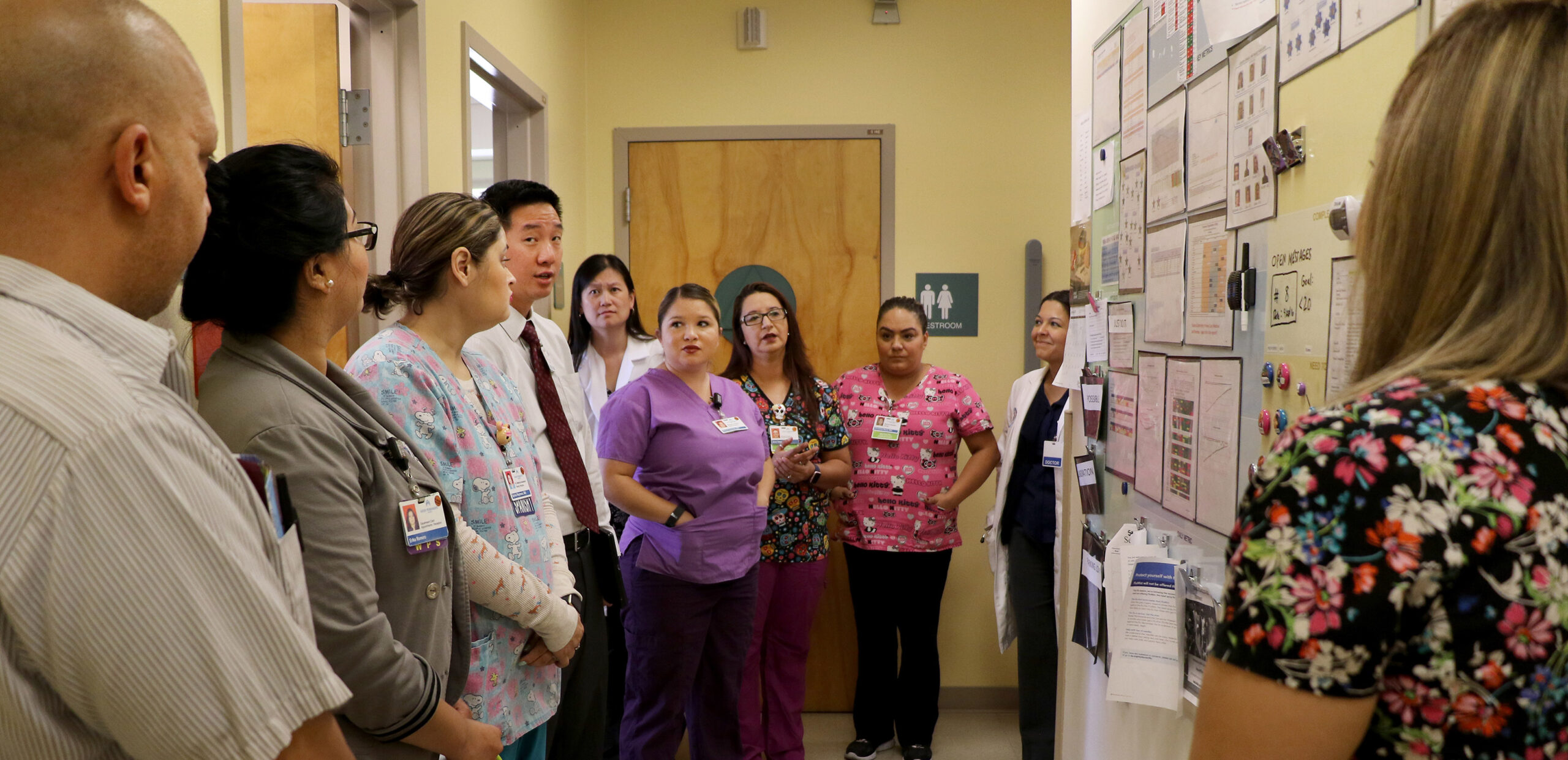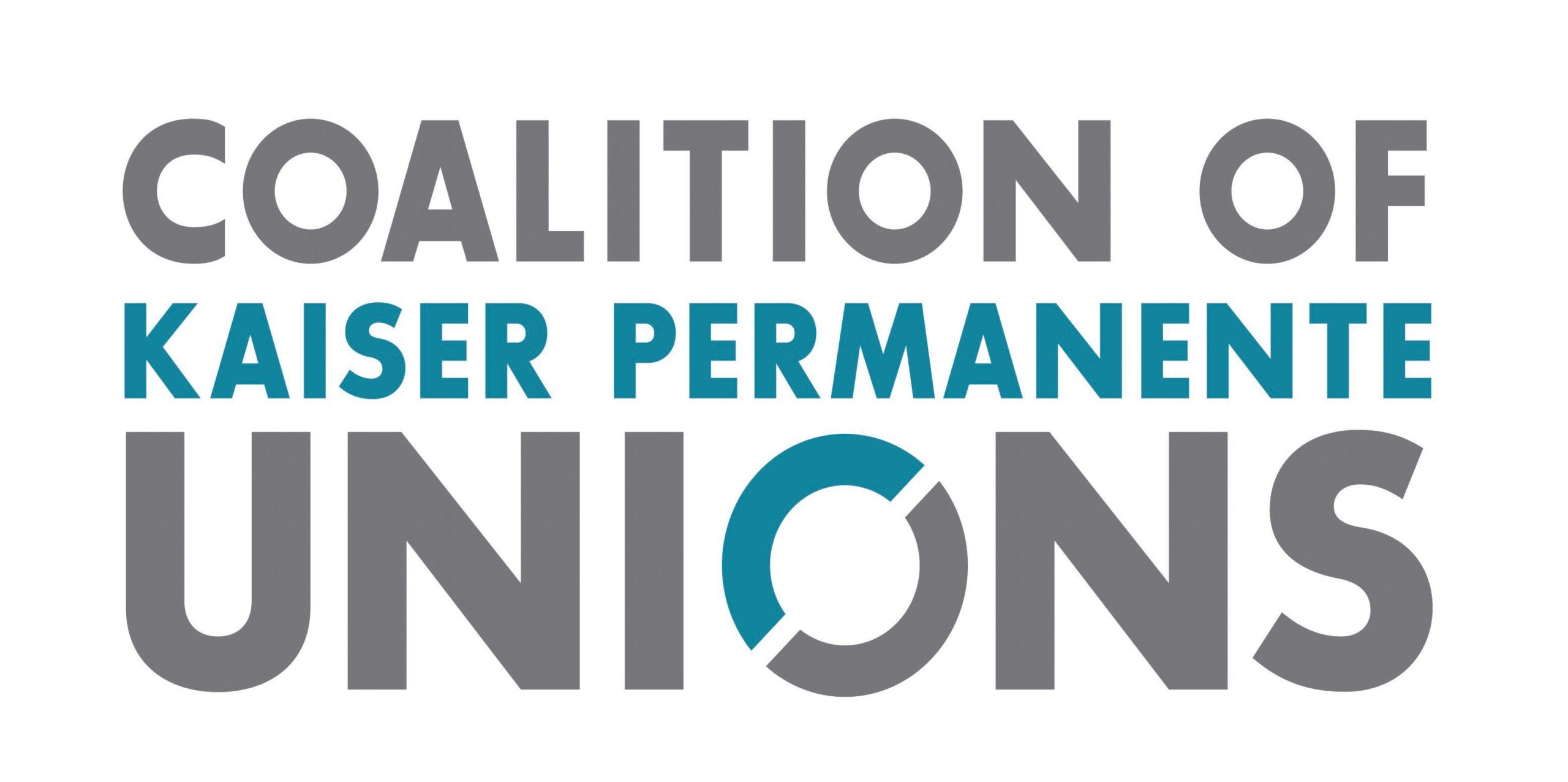
Mission and History
About the Coalition
“As social benefit membership organizations, founded on the principle of making life better for those we serve, it is our common goal to make Kaiser Permanente the pre-eminent deliverer of health care in the United States. It is further our goal to demonstrate by any measure that labor-management collaboration produces superior health care outcomes, market leading competitive performance, and a superior workplace for Kaiser Permanente employees.”
– 1997 Labor Management Partnership Agreement
Our History
 A Rough Start
A Rough Start
The Coalition of Kaiser Permanente Unions was born in response to deteriorating labor relations with KP in the early 1990s.
For the past decade, Kaiser Permanente had faced increasing competition from for-profit HMOs. In response, KP cut its workforce and made other changes that workers could not accept. This led to repeated strikes against KP throughout California and Oregon — strikes that threatened to derail KP as an organization and disrupt the livelihood of union members.
A Bold Idea
The unions decided to form a bargaining coalition and prepared for a full-scale corporate campaign against Kaiser Permanente. In 1996, 26 local unions representing 57,000 KP employees formally organized as the Coalition of Kaiser Permanente Unions as an affiliate of the AFL-CIO.
But instead of launching the campaign, Coalition leaders decided to try a new way and approached Kaiser Permanente with a bold idea: partnership.
 A New Way
A New Way
The Kaiser Permanente Labor Management Partnership was born a year later, on Oct. 1, 1997.
The LMP was created to be different from traditional union-employer “cooperation” arrangements. Management would not come to labor for help after decisions were made. Instead, the LMP integrated labor into decision making at all levels, from the board room to the examination room. In short, the people who deliver health care services would have a say in the process.
A National Model
For more than two decades, the Labor Management Partnership has been a national model and inspiration. It has shown how cooperation instead of antagonism can lead both to better patient care outcomes and to making KP a better place to work. True, relations got strained. Couples argue, or break up and stay friends.
But now employees of Kaiser Permanente — unions and management — have renewed their commitment to the Partnership and the new model it offers for labor-management relations in health care and other industries.
A Record of Accomplishment
The Coalition’s six National Agreements with Kaiser Permanente lay out a record of innovation and improvement both in patient care outcomes and in workplace environments.
 The agreements have also provided industry-leading wages and benefits, including:
The agreements have also provided industry-leading wages and benefits, including:
- Employment and Income Security. The NA provides training and ensures priority redeployment to other positions within KP.
- Unit-based Teams. More than 3,500 natural work groups collaborate to solve problems and improve patient care in hospitals, clinics, and business offices throughout KP.
- Education and Career Development. Through our two education trusts and Workforce of the Future program, union members receive counseling, tuition reimbursements, and more to advance their careers.
- Workforce Wellness. The Total Health Incentive Plan is a pioneering, collaborative approach to improving the health of KP workers based on core union principles.
- Union Growth. Beginning with 57,000 workers in 1997, Coalition membership reached a peak of 132,000 two decades later. Today, more than 85,000 KP employees are represented by Coalition local unions.
A Complete 180
Through the Labor Management Partnership, Kaiser Permanente and the Coalition of Kaiser Permanente Unions have transformed a collapsing system into an industry leader in the delivery of affordable, high-quality health care.
Our 2019 National Agreement will help ensure that the Partnership remains a leader for the 21st century.



